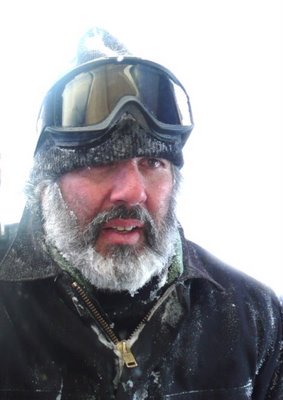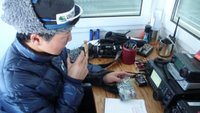 Last week, I attended classes for professional mariners at the Maritime College of the State University of New York out at Fort Schyler, near the Throgg's Neck Bridge. The classes were a requirement of my officer's rating in the US Merchant Marine.
Last week, I attended classes for professional mariners at the Maritime College of the State University of New York out at Fort Schyler, near the Throgg's Neck Bridge. The classes were a requirement of my officer's rating in the US Merchant Marine. As part of the course, we fought oil fires aboard the
As part of the course, we fought oil fires aboard theremains of a tugboat at a fire fighting training field out on Long Island. The fire chiefs who operate the facility put our class through all kinds of simulated fires, ranging from oil fires on deck, engine room fires below deck, and fires in sleeping quarters. The fires were hot and immensely smokey. It was 80 degrees F outside and the clothing was heavy. But the fundamental lesson that we learned is that if you keep your wits about you, act rapidly, stay low, and use the right tool and have the right people on your team, that these fires can indeed be put out and your ship saved.
The day before (slightly out of order), we practiced abandoning ship and survival at sea while floating in the ocean waiting for rescue. The fundamental lesson of that experience is that if one has hope, and focuses on living long enough to be rescued, one greatly increases the odds that he will survive. Lacking the will to survive and a spirit of cooperation, the odds are that even the heartiest seaman will die of exposure before rescue arrives.





















